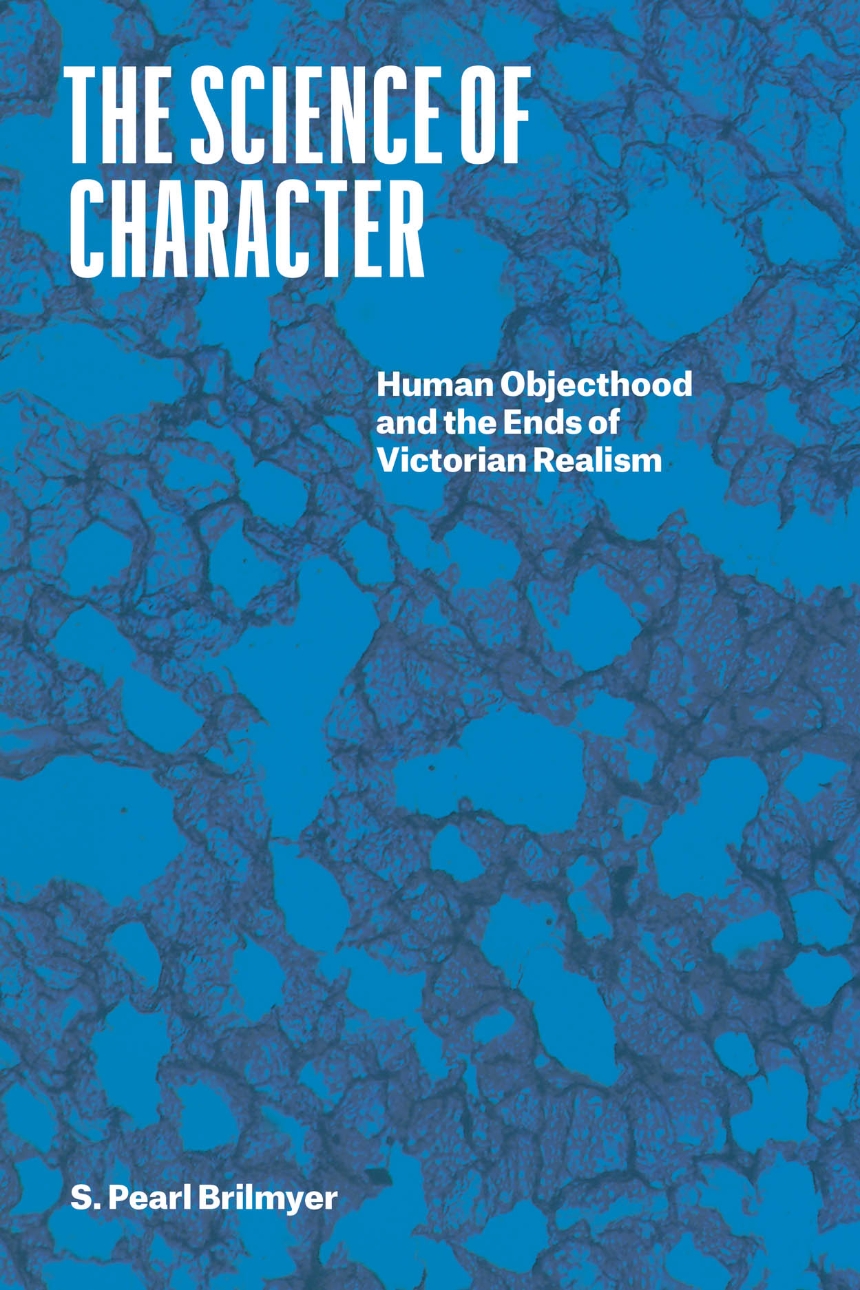The Science of Character
Human Objecthood and the Ends of Victorian Realism
9780226815787
9780226815770
9780226815794
The Science of Character
Human Objecthood and the Ends of Victorian Realism
The Science of Character makes a bold new claim for the power of the literary by showing how Victorian novelists used fiction to theorize how character forms.
In 1843, the Victorian philosopher John Stuart Mill called for the establishment of a new science, “the science of the formation of character.” Although Mill’s proposal failed as scientific practice, S. Pearl Brilmyer maintains that it found its true home in realist fiction of the period, which employed the literary figure of character to investigate the nature of embodied experience. Bringing to life Mill’s unrealized dream of a science of character, novelists such as George Eliot, Thomas Hardy, and Olive Schreiner turned to narrative to explore how traits and behaviors in organisms emerge and develop, and how aesthetic features—shapes, colors, and gestures—come to take on cultural meaning through certain categories, such as race and sex. Engaged with materialist science and philosophy, these authors transformed character from the liberal notion of the inner truth of an individual into a materially determined figuration produced through shifts in the boundaries between the body’s inside and outside. In their hands, Brilmyer argues, literature became a science, not in the sense that its claims were falsifiable or even systematically articulated, but in its commitment to uncovering, through a fictional staging of realistic events, the laws governing physical and affective life. The Science of Character redraws late Victorian literary history to show how women and feminist novelists pushed realism to its aesthetic and philosophical limits in the crucial span between 1870 and 1920.
In 1843, the Victorian philosopher John Stuart Mill called for the establishment of a new science, “the science of the formation of character.” Although Mill’s proposal failed as scientific practice, S. Pearl Brilmyer maintains that it found its true home in realist fiction of the period, which employed the literary figure of character to investigate the nature of embodied experience. Bringing to life Mill’s unrealized dream of a science of character, novelists such as George Eliot, Thomas Hardy, and Olive Schreiner turned to narrative to explore how traits and behaviors in organisms emerge and develop, and how aesthetic features—shapes, colors, and gestures—come to take on cultural meaning through certain categories, such as race and sex. Engaged with materialist science and philosophy, these authors transformed character from the liberal notion of the inner truth of an individual into a materially determined figuration produced through shifts in the boundaries between the body’s inside and outside. In their hands, Brilmyer argues, literature became a science, not in the sense that its claims were falsifiable or even systematically articulated, but in its commitment to uncovering, through a fictional staging of realistic events, the laws governing physical and affective life. The Science of Character redraws late Victorian literary history to show how women and feminist novelists pushed realism to its aesthetic and philosophical limits in the crucial span between 1870 and 1920.
296 pages | 5 halftones | 6 x 9 | © 2022
Literature and Literary Criticism: British and Irish Literature, General Criticism and Critical Theory
Reviews
Table of Contents
List of Figures
Introduction Ethology, or the Science of Character
As Much an External Thing as a Tree or a Rock
A Power of Observation Informed by a Living Heart; or Involuntary, Palpitating
Inconsistency and Formlessness
Chapter 1 Plasticity, Form, and the Physics of Character in Eliot’s Middlemarch
Plastic Forms
Irregular Solids, Viscous Fluids
Chapter 2 Sensing Character in Impressions of Theophrastus Such
Theophrastus Who?
Descriptive Minutiae
To Sketch a Species
The Natural History of Human Life
After the Human
Chapter 3 The Racialization of Surface in Hardy’s Sketch of Temperament and Hereditary Science
The Color of Heredity
On the Whiteness of the Ground
Accretions of Character
Chapter 4 Schopenhauer and the Determination of Women’s Character
An English Start
The Character of the Will
Impulsive Aesthetics
Chapter 5 The Intimate Pulse of Reality; or, Schreiner’s Ethological Realism
The Ethics of Nature
The Ethics of Description
The Ethics of Force
Coda Spontaneous Generations of Character between Realism and Modernism
Acknowledgments
Bibliography
Index
Introduction Ethology, or the Science of Character
As Much an External Thing as a Tree or a Rock
A Power of Observation Informed by a Living Heart; or Involuntary, Palpitating
Inconsistency and Formlessness
Chapter 1 Plasticity, Form, and the Physics of Character in Eliot’s Middlemarch
Plastic Forms
Irregular Solids, Viscous Fluids
Chapter 2 Sensing Character in Impressions of Theophrastus Such
Theophrastus Who?
Descriptive Minutiae
To Sketch a Species
The Natural History of Human Life
After the Human
Chapter 3 The Racialization of Surface in Hardy’s Sketch of Temperament and Hereditary Science
The Color of Heredity
On the Whiteness of the Ground
Accretions of Character
Chapter 4 Schopenhauer and the Determination of Women’s Character
An English Start
The Character of the Will
Impulsive Aesthetics
Chapter 5 The Intimate Pulse of Reality; or, Schreiner’s Ethological Realism
The Ethics of Nature
The Ethics of Description
The Ethics of Force
Coda Spontaneous Generations of Character between Realism and Modernism
Acknowledgments
Bibliography
Index
